The Hensley Photo Library, University of Chicago, is a rich collection of photographs of Calcutta from 1943-44. They are a delight to browse through anyway. After the lamp-post in one of the photographs caught my eye, I kept looking for more varieties in each photograph.
Hope you have fun going through the rest of the photographs in the Collection.
Yes, the sign-board says Bombay, but this is obviously from Calcutta. The archivist also says so.
The first one is of the Howrah Station. The second is at Sealdah. Are the lamp-posts different because they are meant to light up different kinds of spaces? The first sheds light on rickhsaw or other public transport stands, while the latter is street-lighting. The Sealdah Station looks very different now. I do not know how and when the transition took place. It seems Hensley may have caught another photographer in the act: what else could the person squatting in the foreground be doing?
This early morning scene echoes the lamp-post in the first photograph (in this post). You can almost smell the groggy freshness in the air. For the lamp too it seems too early to raise its head up absolutely straight. It's lazily tilted. Donkeys have become a rare sight in the city. A few days back I heard that the last donkey in Shantiniketan has died. Which broke my heart. Urbanisation and mechanisation are difficult conditions to survive in for a creature whose breeding, I suppose, came out of a largely utilitarian motive. Apart from carrying sundry load, they were also useful to dhoba-s or launderers (which may well be the subject of this photograph). They aren't very popular otherwise, are they? But they aren't even close to being endangered, and that is a relief.
The last three here are all from the Tram Terminus. The first one has two lamps to a pole, while the other two have four to a pole. The last photograph I found quite striking, what with the monsoon clouds in the background.
P. T. Nair tells us that while Harrison Road was the first to receive electric lighting around the turn of the century, it was not until 1914 that major sections of the city came to be illuminated thus. With an increase in the number of buses and trams plying the roads, the CESC started paying greater attention to street-lighting around 1927. Up until the 1950s, we are told, there were 4 classes of electric lights: i) 75 watt single lamps for very narrow passages; ii) 100 watt single lamps for lanes with little motor traffic; iii) 3-75 watt cluster lamps for roads with moderate traffic; and iv) 3-100 watt cluster lamps for major roads where the traffic was heavy. The height of the last type would range between 25 and 30 feet, and they would be separated from each other by about 150 ft.
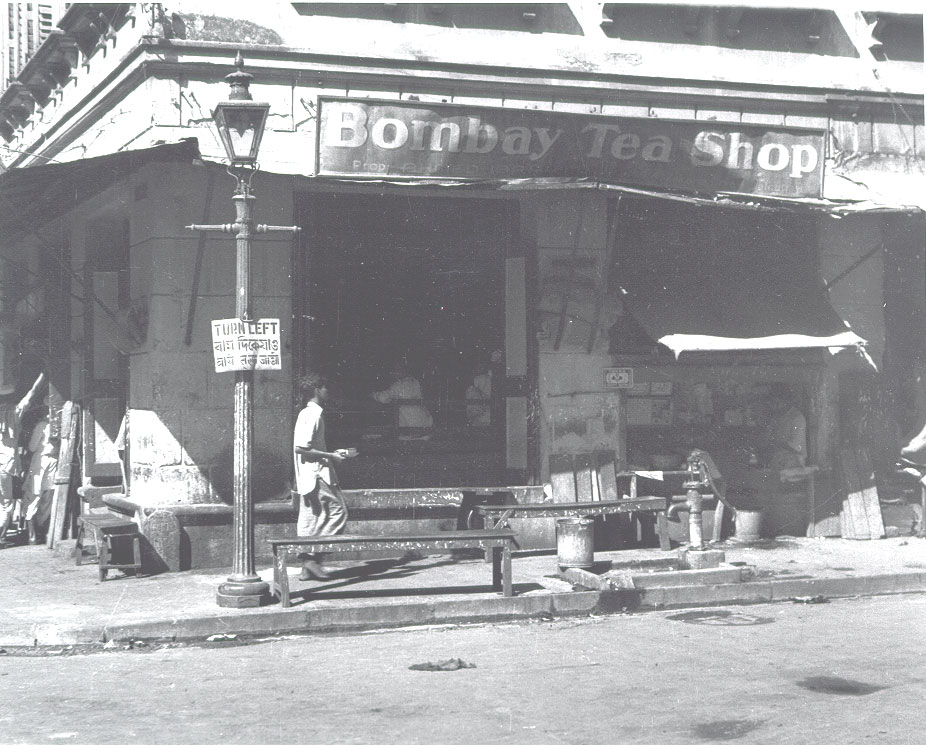
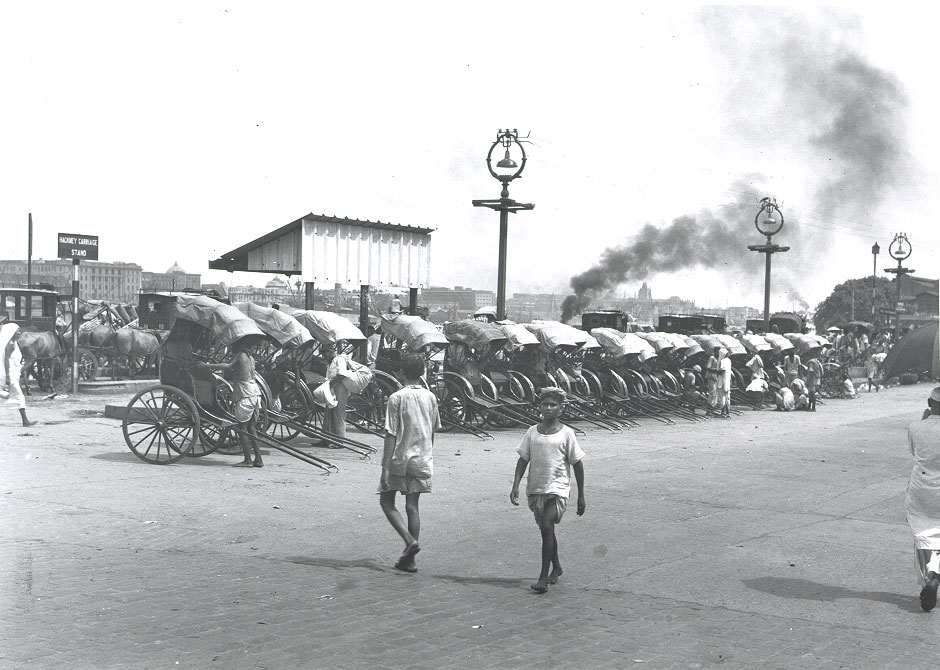

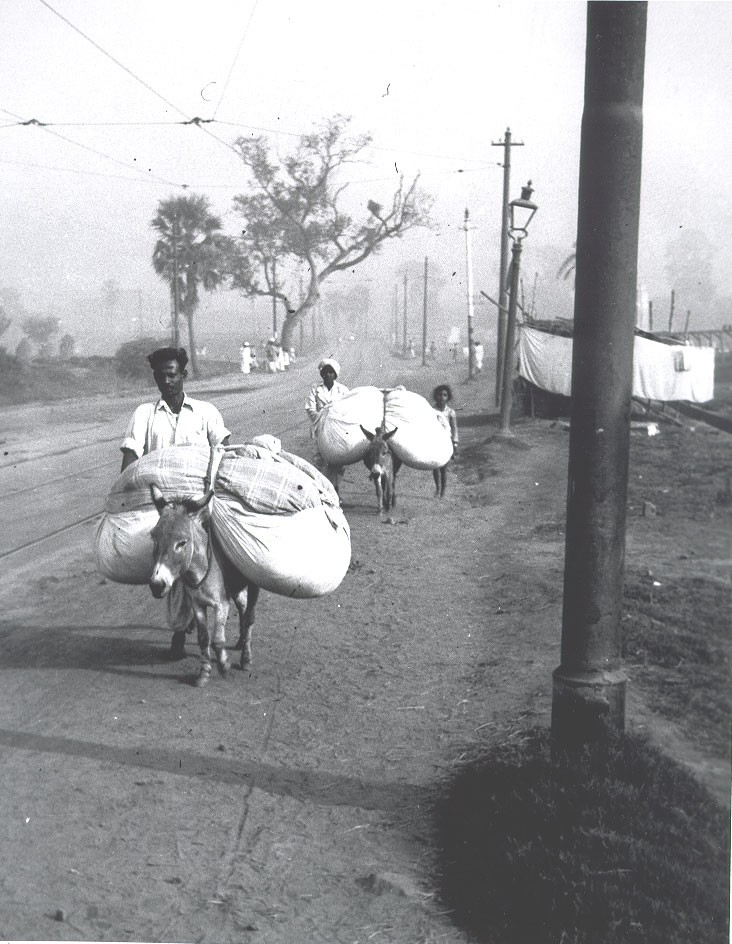
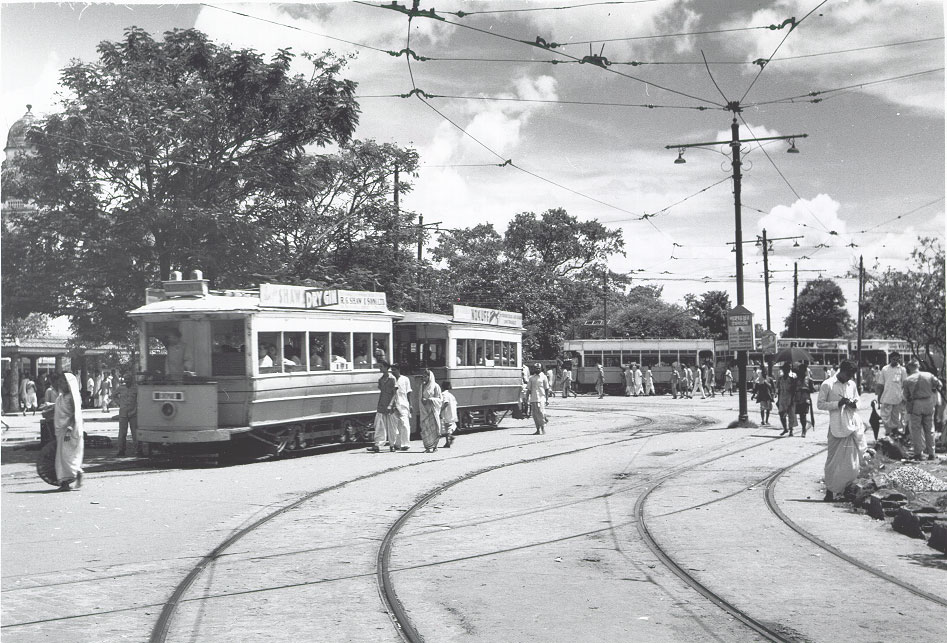
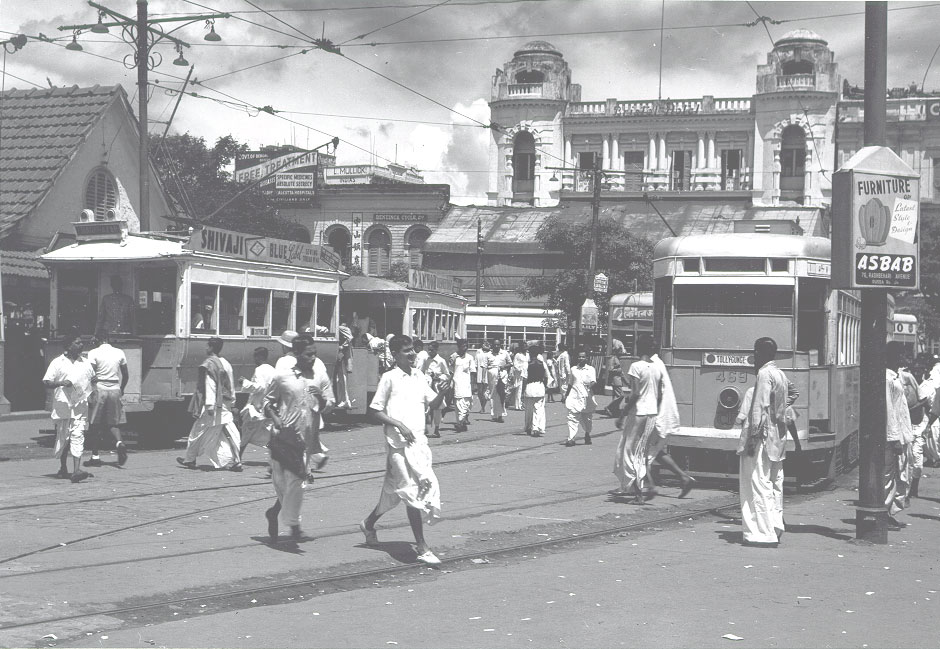
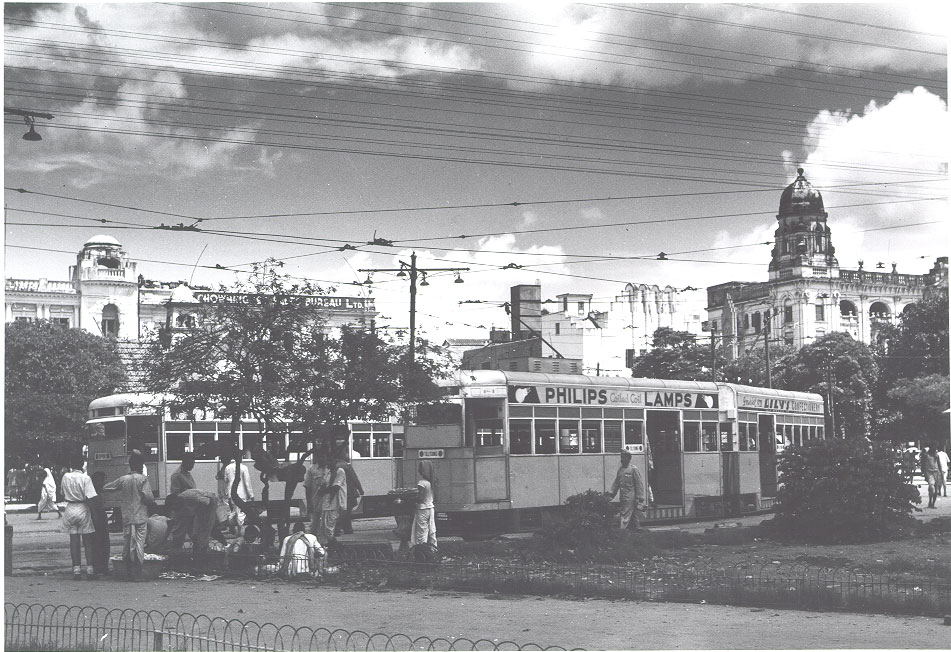
These posts on various types of public illumination are damn enjoyable. :D
ReplyDeleteAre there, I wonder, photographs taken at night?
Thank you for reminding me of this blog! :P
ReplyDeleteI haven't posted in a long time, although I do have a few things queued up. Shortage of time and all that.
I can think of this one photograph taken by an American GI in 1945. Numbers 40 and 48 in the series are also taken at night. You may remember this collection going almost viral on facebook at one point. I hope I'll stumble upon more of night-time photographs.
I remember the Telegraph carrying these photos by a GI in one Pujo special, many years ago. They had juxtaposed it with photos taken of the same place in the present day. A slightly cliched presentation but an interesting view nonetheless.
ReplyDeleteThese photos are lovely though. :)
This blog is really helpful regarding all educational knowledge I earned. It covered a great area of subject which can assist a lot of needy people. Everything mentioned here is clear and very useful.
ReplyDeleteหลอด led
I really like your content and information. I was looking for information related to street lights. You provide satisfactory information. If anyone is looking street light pole So don't wait & visit there.
ReplyDeleteNice article thanks for sharing this article with us. To know more about Lightpole.
ReplyDelete
ReplyDeletetable lamp not only brighten up a room but also add charm and personality to the décor. I recently explored Vibecrafts and found their collection of stylish table lamps really impressive – perfect for living rooms, bedrooms, or workspaces.
This blog perfectly explains how lamp lights can transform the mood of a room. From cozy corners to living rooms, the right lamp creates beauty and comfort together. If you’re planning to buy stylish and affordable lamp lights online, Vibecrafts is the perfect choice. Their collection includes elegant, modern, and artistic lamps that suit every home style.
ReplyDeleteThis blog beautifully highlights how lamp are more than just a source of light – they define the mood and style of a room. For anyone looking to buy premium-quality and stylish lamps online, Vibecrafts is the best place. Their collection includes elegant, traditional, and modern lamp designs that suit every home interior.
ReplyDelete
ReplyDeleteFor anyone looking to upgrade their lamp light , I highly recommend exploring the unique collection at VibeCrafts. They offer a wide range of stylish, handcrafted lamps that blend modern design with traditional craftsmanship. VibeCrafts' lamps are not only visually stunning but also built for long-lasting performance—perfect for adding a warm and welcoming glow to any room.
Nice post! Lamp Lights not only brighten spaces but also create a cozy, elegant vibe. Vibecrafts has an exclusive collection of decorative and modern lamp lights that perfectly enhance the beauty of homes.
ReplyDeleteLoved this read! The right lamp doesn’t just light up a room — it defines its character. I recently bought a shadow Lamp from VibeCrafts and it completely transformed my living space. Their collection includes stylish table, floor, and designer lamps that blend beautifully with any décor.
ReplyDeleteThe lamp from VibeCrafts are absolutely gorgeous! Each design adds warmth, elegance, and a cozy glow to any room. Their collection perfectly balances style and functionality, making every space feel inviting. I highly recommend VibeCrafts for high-quality, artistic lamps that truly brighten up your home decor.
ReplyDeleteGreat ideas shared here! A stylish lamp can completely change the mood of a room. I recently discovered VibeCrafts’ lamp collection, and their designs are elegant, warm, and perfect for modern homes. If you’re planning to buy decorative lamps online in India, VibeCrafts is a must-visit!
ReplyDeleteWonderful blog on lamp light! Your tips on ambience and décor are insightful. For stylish, warm, and beautifully crafted lamps, VibeCrafts offers stunning designs that instantly elevate any room’s atmosphere.
ReplyDelete